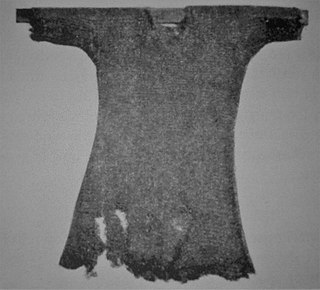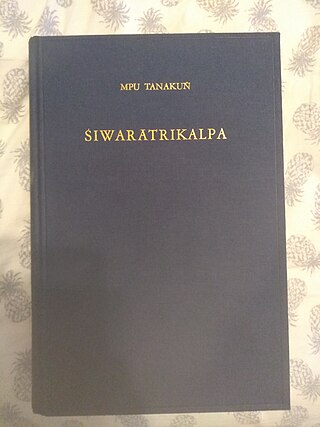
Majapahit, also known as Wilwatikta, was a Javanese Hindu-Buddhist thalassocratic empire in Southeast Asia that was based on the island of Java. It existed from 1293 to circa 1527 and reached its peak during the era of Hayam Wuruk, whose reign from 1350 to 1389 was marked by conquests that extended throughout Southeast Asia. His achievement is also credited to his prime minister, Gajah Mada. According to the Nagarakretagama written in 1365, Majapahit was an empire of 98 tributaries, stretching from Sumatra to New Guinea; consisting of present-day Indonesia, Singapore, Malaysia, Brunei, southern Thailand, Timor Leste, southwestern Philippines although the scope of Majapahit sphere of influence is still the subject of debate among historians. The nature of Majapahit's relations and influence upon its overseas vassals and also its status as an empire still provokes discussion.

Javanese is a Malayo-Polynesian language spoken by the Javanese people from the central and eastern parts of the island of Java, Indonesia. There are also pockets of Javanese speakers on the northern coast of western Java. It is the native language of more than 68 million people.
Old Javanese or Kawi is the oldest attested phase of the Javanese language. It was spoken in the eastern part of what is now Central Java and the whole of East Java, Indonesia. As a literary language, Kawi was used across Java and on the islands of Madura, Bali, and Lombok. It had a sizable vocabulary of Sanskrit loanwords but had not yet developed the formal krama language register, to be used with one's social superiors that is characteristic of modern Javanese.
The Javanese script is one of Indonesia's traditional scripts developed on the island of Java. The script is primarily used to write the Javanese language, but in the course of its development has also been used to write several other regional languages such as Sundanese, Madurese, and Sasak; the lingua franca of the region, Malay; as well as the historical languages Kawi and Sanskrit. Javanese script was actively used by the Javanese people for writing day-to-day and literary texts from at least the mid-15th century CE until the mid-20th century CE, before its function was gradually supplanted by the Latin alphabet. Today the script is taught in DI Yogyakarta, Central Java, and the East Java Province as part of the local curriculum, but with very limited function in everyday use.

Hinduism has historically been a major religious and cultural influence in Java, Indonesia. Hinduism was the dominant religion in the region before the arrival of Islam. In recent years, it has also been enjoying something of a resurgence, particularly in the eastern part of the island.

Kakawin Ramayana is an Old Javanese poem rendering of the Sanskrit Ramayana in kakawin meter.

The Nagarakretagama or Nagarakṛtāgama, also known as Desawarnana or Deśavarṇana, is an Old Javanese eulogy to Hayam Wuruk, a Javanese king of the Majapahit Empire. It was written on lontar as a kakawin by Mpu Prapanca in 1365. The Nagarakretagama contains detailed descriptions of the Majapahit Empire during its greatest extent. The poem affirms the importance of Hindu–Buddhism in the Majapahit empire by describing temples and palaces and several ceremonial observances.
Kakawin are long narrative poems composed in Old Javanese, also called "Kawi", written in verse form with rhythms and meters derived from Sanskrit literature. Poets used a formalized literary language, rather than the vernacular. Poets composed and performed the poems at the courts of central and east Java kings between the 9th and 16th centuries, and in Bali.

Kakawin Sutasoma is an Old Javanese poem in poetic meters. It is the source of the motto of Indonesia, Bhinneka Tunggal Ika, which is usually translated as Unity in Diversity, although it means '(Although) in pieces, yet One'. It is not without reason that the motto was taken from this kakawin as the kakawin teaches religious tolerance, specifically between the Hindu and Buddhist religions.
Javanese literature is, generally speaking, literature from Java and, more specifically, from areas where Javanese is spoken. However, similar with other literary traditions, Javanese language works were and not necessarily produced only in Java, but also in Sunda, Madura, Bali, Lombok, Southern Sumatra and Suriname. This article only deals with Javanese written literature and not with oral literature and Javanese theatre such as wayang.

Tantu Pagelaran or Tangtu Panggelaran is an Old Javanese manuscript written in the Kawi language that originated from the 15th-century Majapahit period. The manuscript describes the mythical origin of Java island.
Javanese Surinamese are an ethnic group of Javanese descent in Suriname. They have been present since the late 19th century, when their first members were selected as indentured laborers by the Dutch colonizers from the former Dutch East Indies.

Javanisation or Javanization is the process in which Javanese culture dominates, assimilates, or influences other cultures in general. The term "Javanise" means "to make or to become Javanese in form, idiom, style, or character". This domination could take place in various aspects; such as cultural, language, politics and social.

The Baju Rantai is a type of armor from Nusantara archipelago.

Śiwarātrikalpa, also known as the Kakawin Lubdhaka is an Old Javanese Hindu kakawin text written by Mpu Tanakung. This text aimed to spread the observance of Maha Shivaratri from the Vijayanagara Empire, who had given a great impetus to the revival of Saivite Hinduism, to the Hindus of Indonesia. It is believed to have been composed about 600 years ago, between 1466 and 1478, at a point when the Saivism sect of Hinduism dominated Java. Scholars have theorized that this revivalist zeal in Java was the result of the emerging Malacca Sultanate, through which Islam had been making gains in Java, and Indonesia in general.

Buda Script or (Aksara Buda) or Gunung Script is an archaic script. Based on its shape, the Buda Script still has a close relationship with the Kawi script. This script was previously used on the island of Java and Bali. This type of script is called the Buda script because it is considered to have originated from the pre-Islamic era which is called the Buddhist Age. The word Buda is based on the Buddha word. Manuscripts containing writing using the Buda script are commonly found in mountainous areas. Because of that, this type of script is also called the "Mountain script".

Mpu Tantular was a famous Javanese poet of Javanese literature who lived in the 14th century, during the reign of king Hayam Wuruk. Tantular was a Buddhist, and was respectful to other religions. This can be seen in two items of kakawin or poetry, the Kakawin Arjunawijaya and Kakawin Sutasoma. One of the verses from the Kakawin Sutasoma was later taken as the motto or motto of the Republic of Indonesia: "Bhinneka Tunggal Ika" or different but one.

Karambalangan is a type of personal armor from Java. It is a metal coating worn in front of the chest or breastplate.
Kakawin Arjunawijaya is an Old Javanese poem in poetic meters, written by Mpu Tantular between 1374 and 1379 CE.













